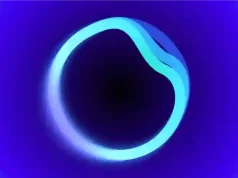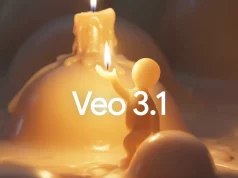The latest community-driven progress with AMD’s FidelityFX Super Resolution 4 (FSR 4) INT8 upscaler prompts an important set of questions: How does this version compare to the FP8-based FSR 4 in image quality? What is its performance like on RDNA 3 and RDNA 2 GPUs? And ultimately, will it become a viable official option for upscaling on older AMD graphics cards once released? Today, we delve into these questions to provide a clear picture.
Background: FSR 4 and AMD’s Architecture Support
FSR 4 officially supports only the newest RDNA 4 GPUs—such as the Radeon RX 9070 XT—because it relies on FP8 (8-bit floating point) hardware acceleration exclusive to this architecture. However, AMD has been quietly working on an INT8 (integer 8-bit) variant of FSR 4, which uses a widely supported data format introduced in RDNA 2. This suggests the INT8 model could theoretically run on
GPUs as old as the RX 6000 series.
The evidence for this development surfaced when AMD accidentally published partial source code for FSR 4’s INT8 model on its GPUOpen GitHub repository. The files were quickly downloaded by the community before being removed, enabling enthusiasts to compile a working FidelityFX DLL with FSR 4 INT8 support and test it on unsupported cards.
How to Use FSR 4 INT8 on RDNA 3 and RDNA 2 GPUs
Enabling FSR 4 INT8 on RDNA 3 GPUs is straightforward: simply replace the existing FSR 3.1 DLL in a supported game with the newly compiled INT8 DLL. Some games even update their UI to show FSR 4 instead of 3.1. Running it on RDNA 2 cards is more complex due to driver issues, but community guides have made it possible.
A word of caution: this version is still in development, so results may differ when AMD officially releases it. Yet, early tests give valuable insight into how it performs.
Image Quality: How Does INT8 Compare to FP8?
We compared FSR 4 INT8 running on the Radeon RX 7900 XTX (RDNA 3) to the FP8 FSR 4 on the RX 9070 XT (RDNA 4). At high resolutions like 4K Quality mode, both versions deliver nearly indistinguishable image quality with only minor differences under close inspection. Both handle anti-aliasing and detail reconstruction effectively, significantly reducing motion blur and shimmering compared to FSR 3.
However, as resolutions and render scales drop—especially at 1440p Performance—the FP8 model maintains clearer, sharper details and less blur. This suggests the INT8 model uses a scaled-down AI network to balance broader compatibility against ultra-fine detail reconstruction. Despite this, the INT8 version remains a vast improvement over FSR 3 and even XeSS DP4a in image quality, with better stability and less shimmering.
Performance on RDNA 3 and RDNA 2 GPUs
Performance-wise, FSR 4 INT8 demands more from RDNA 3 and RDNA 2 GPUs than the FP8 version does on RDNA 4. For example, in Ratchet and Clank: Rift Apart at 4K, the INT8 version on RX 7900 XTX runs slower by about one quality tier compared to FP8 on RX 9070 XT. On RDNA 2 hardware like the RX 6750 XT at 1440p, the INT8 version is notably demanding—slower than FSR 3 Quality and roughly equivalent to XeSS Ultra Quality.
Benchmarks show that FSR 4 INT8 typically requires dropping two quality settings to achieve the same frame rates as previous-generation upscalers like FSR 3 or XeSS. Still, the perceptible image quality gains often justify this cost. Users can choose higher quality modes at the expense of lower frame rate gains or select performance modes for a better balance.
Comparing Upscaling Technologies: FSR 4 INT8 vs FP8 vs FSR 3 vs XeSS
When set to the same labeled quality modes, FSR 4 FP8 delivers the best overall image quality, followed closely by INT8, then XeSS DP4a, with FSR 3 trailing behind. The INT8 version stands out for its reduced motion blur, better detail, and superior image stability—especially compared to FSR 3.
When normalizing for performance, FSR 4 INT8 at Performance mode surpasses FSR 3 at Quality mode and typically outperforms XeSS Quality mode, offering less aliasing and a sharper image despite running at lower internal resolutions. This advantage grows at 1440p where INT8 significantly outclasses FSR 3, making it the clear choice for older RDNA 3 and RDNA 2 GPUs.
The Outlook: Will AMD Release FSR 4 INT8 Officially?
The leaked code and community effort have revealed a powerful upscaling alternative for older AMD GPUs—one that dramatically elevates image quality over FSR 3 and competes strongly with XeSS. Int8 FSR 4 could extend the lifespan of RDNA 2 and 3 graphics cards by offering a modern and effective upscaling method.
There is speculation AMD may delay or limit its official release to protect RDNA 4 sales, as FSR 4’s FP8 acceleration is a flagship feature. Yet withholding this option risks alienating existing Radeon users who rely on older hardware. Making the INT8 version available as an optional toggle alongside FSR 3 would better serve the wider AMD community, strengthening brand loyalty while encouraging future upgrades.
In summary, the FSR 4 INT8 model represents a significant step forward in gaming upscaling for AMD’s older GPUs, with image quality approaching that of the FP8 standard and performance that, despite its demands, remains compelling. It is the recommended choice for RDNA 3 and 2 users seeking a modern upscaler ahead of any official AMD release.










